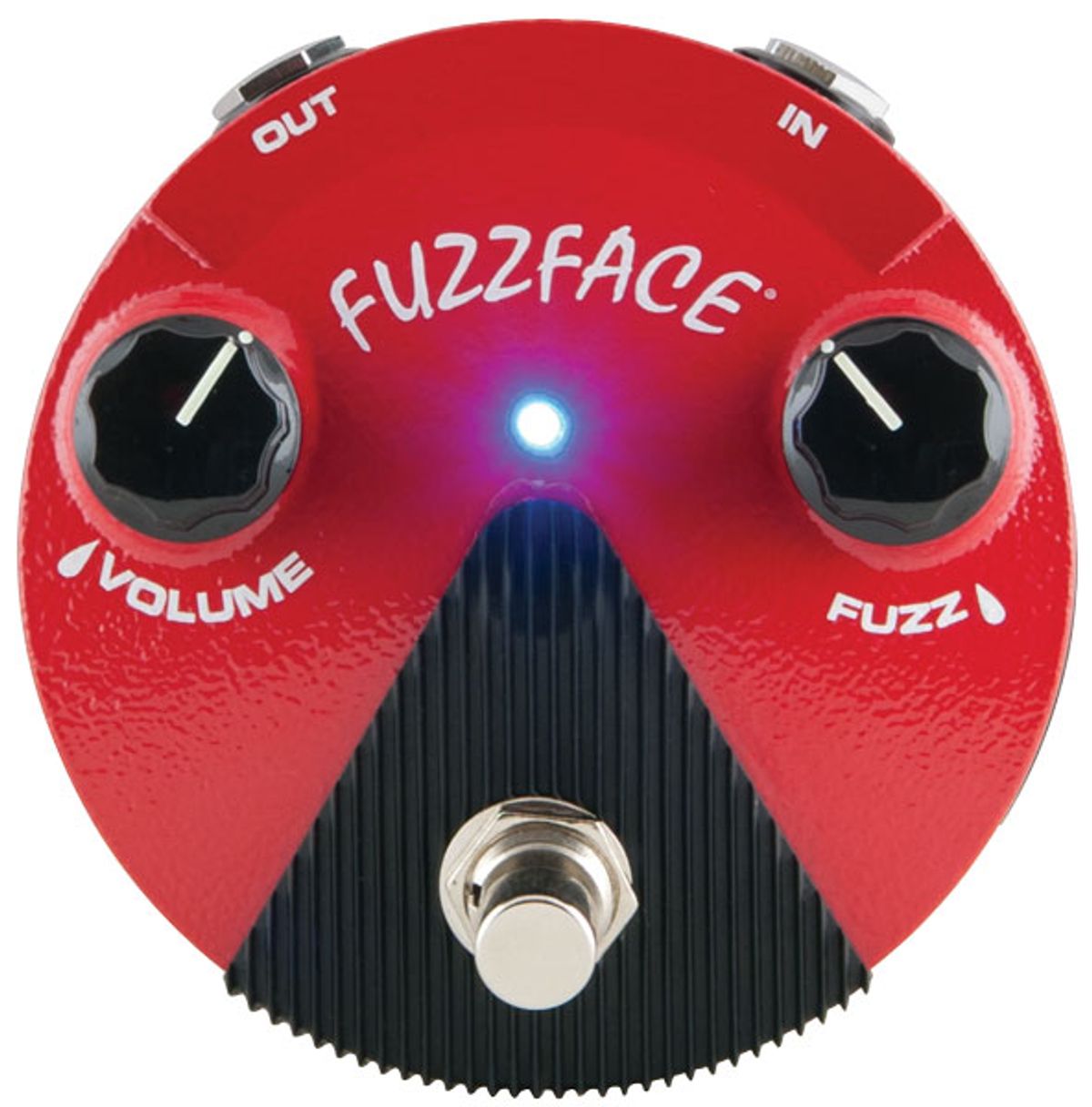
Finally, a great-sounding germanium-transistor Fuzz Face at right around a hundred bucks.
Ring the bells. Crack the champagne. At long last, you can buy a great-sounding germanium-transistor Fuzz Face for around a hundred bucks.
The Fuzz Face Mini Germanium is one of three new small-format Dunlop Fuzz Faces. (The others are higher-gain models with silicon transistors.) At 3 ½" circumference, it’s about half the size of a traditional model, and a better fit for most pedalboards. (The downsizing has no sonic consequences.)
Simply Impossible
The Fuzz Face circuit requires only about a dozen simple components. So why has it been necessary to pay boutique prices for a vintage-correct sound?
Blame those pesky germanium transistors. They became increasingly difficult to source after silicon replaced germanium for most electronic applications, a transition that was pretty much complete by the time Hendrix rocked Woodstock. New-old stock (NOS) germanium transistors aren’t just rare—they’re unstable, requiring laborious measuring and matching. But that situation is changing thanks to the recent spate of new-production germanium transistors and, in Dunlop’s case, some remarkable sourcing of NOS parts. Whatever their provenance, these transistors sound great.
The Germanium Mystique
Germanium doesn’t automatically sound better than silicon, but it usually sounds different. Silicon transistors tend to be higher gain, delivering brighter, tighter tones. Germanium transistors often sound warmer and spongier, and they excel at transitioning smoothly between clean and fuzz timbres according to input level. A properly voiced germanium Fuzz Face lets you drive from your guitar’s volume knob. Diming it should yield thick, high-cholesterol distortion. Rolling it back should reveal a clean tone nearly indistinguishable from your sound with the pedal bypassed.
Ratings
Pros:
A great vintage-style Fuzz Face at a great price.
Cons:
The quirky Fuzz Face circuit isn’t for everybody.
Tones:
Playability/Ease of Use:
Build/Design:
Value:
Street:
Street $129
Jim Dunlop, Fuzz Face Mini Germanium FFM2
jimdunlop.com
The FFM2 triumphs on this front, offering as much dynamic range as any Fuzz Face I’ve played. You could literally leave it on for the entire gig, regulating your distortion solely from the guitar.
I started out with a pre-CBS Strat, a brownface Fender Tremolux, and the Fuzz Face floored. Result: gooey fuzz goodness à la Jimi’s “Bold as Love” solo. The circuit’s high gain and treble-roll off softened the bridge pickup’s brittle edge while thickening lows. But amazingly (yes, it still amazes me after all these years), a twist of the Strat’s volume knob morphed the tone from corpulent to crystalline. It’s no mystery why so many Strat players are Fuzz Face fanatics.
Which isn’t to say the circuit doesn’t sound fab with humbuckers (though you sometimes encounter that opinion). The distortion was even wilder and looser with the hotter output of the vintage humbuckers in my ’65 Gibson Trini Lopez, and the volume-knob clean up was equally dramatic.
I also compared the FFM2 to a half-dozen boutique and homemade germanium Fuzz Faces. Due to variances in transistor gain, each sounded slightly different, but none sounded better than the Mini.
Let’s Face It
Almost everyone loves Hendrix, but not everyone loves Jimi’s favorite distortion pedal. Fuzz Face quirks can be deal-breakers for some players. Vintage-style Fuzz Face tones are more about mass than focus—the same qualities that make them shine for single-note solos played with a trio can make their tones vanish when playing in a busy quintet. Most players keep the fuzz knob floored because lower settings can be farty and anemic. It’s a notoriously noisy circuit—if your guitar isn’t well shielded, brace for radio interference. A buffer or buffered effect placed before the Fuzz Face downgrades that mighty roar to an irritating buzz. The circuit sounds best with vintage-output pickups, and downright nasty with actives. Try before you buy.
The Verdict
If you dig high-cholesterol fuzz and supreme dynamic sensitivity, you need a good Fuzz Face—and you’d be hard-pressed to find one that sounds better than the FFM2 at any price. If you’ve been avoiding Dunlop Fuzz Faces because of past models that fell too far from the vintage tree, it’s time to reconsider.


